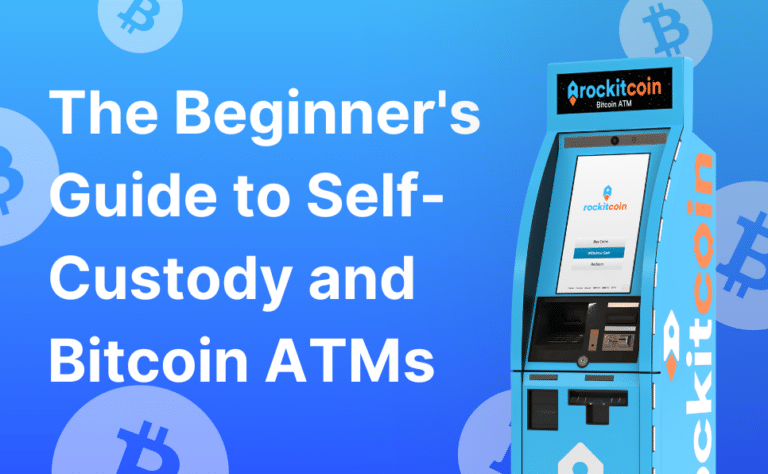Entering the world of cryptocurrency is like stepping into a thrilling adventure filled with digital treasures and complex concepts. But worry not – arming yourself with some foundational knowledge can turn this adventure into an exciting journey of discovery. Whether you’re totally new to the scene or looking to broaden your understanding of digital currencies, these ten key terms are like the compass and map you need to confidently navigate the exciting terrain of crypto.

1. Cryptocurrency
Cryptocurrency serves as the bedrock of this digital landscape, representing virtual or digital currency secured by cryptography. Pioneered by Bitcoin in 2009, these digital assets have diversified into an array of alternatives, each with unique features and use cases. Cryptocurrencies eliminate the need for intermediaries like banks, enabling direct peer-to-peer transactions on decentralized networks. Their potential spans from borderless remittances to facilitating decentralized applications and more!
2. Blockchain
At the heart of most cryptocurrencies lies the blockchain, an immutable and decentralized digital ledger. Think of it as a chain composed of blocks, each containing transactions, interlinked to form an unchangeable record. Transactions are verified through consensus mechanisms, ensuring trust without relying on a central authority. Blockchain’s applications extend beyond finance, reaching industries like supply chain management and healthcare, revolutionizing data transparency and security.
3. Wallet
Unlike a traditional wallet, a cryptocurrency wallet is a digital tool enabling you to manage, send, and receive cryptocurrencies securely. Within, you have a public key (for receiving) and a private key (for access), which must be safeguarded. Wallets come in various forms, including software wallets on your devices, hardware wallets for enhanced security, and even paper wallets as a physical backup. Remember that losing access to your private key means losing access to your funds.
4. Bitcoin ATM
A Bitcoin ATM is a tangible link between the virtual and physical worlds of cryptocurrency. Similar to traditional ATMs, it allows users to buy and sell Bitcoin using physical cash, bridging the gap between digital transactions and real-world interaction. RockItCoin’s extensive network of over 2,000 Bitcoin ATMs can be found in 45 states, providing newcomers and enthusiasts with an accessible entry point to the crypto realm. Click here to visit a location near you!
5. Altcoin
Bitcoin might be the first cryptocurrency, but there’s a whole cast of other digital coins out there – we call them altcoins. Ethereum and Litecoin are among these altcoins, each with its own special powers and features. While Ethereum introduced the concept of smart contracts, enabling developers to create decentralized applications, Litecoin focused on faster transaction confirmations. These altcoins are like the innovative cousins of Bitcoin, each striving to make its mark and offer unique solutions in the ever-evolving world of cryptocurrencies.
6. Mining
Cryptocurrency mining is a computational process where transactions are verified and added to the blockchain. Miners solve intricate puzzles using powerful computers, earning rewards for their efforts. Mining serves dual purposes: securing the network and issuing new coins. However, as networks mature, some cryptocurrencies are transitioning away from resource-intensive mining to more energy-efficient consensus mechanisms.
7. Decentralization
In contrast to centralized financial systems, cryptocurrencies operate on decentralized networks. This fosters transparency, prevents manipulation, and empowers users. Decentralization minimizes single points of failure, enhancing security and resilience. Communities of participants contribute to decision-making processes, ensuring that the network evolves with collective agreement.
8. Public and Private Keys
Public and private keys form the foundation of cryptocurrency security. The public key is your address, and the private key grants access to your holdings, underscoring the importance of their safeguarding. Public keys are shared to receive funds, while private keys must be kept secret to prevent unauthorized access. Memorizing your private key or storing it offline in a secure location is crucial to protecting your assets.
9. Market Capitalization
Market capitalization (market cap) measures the total value of a cryptocurrency. It’s calculated by multiplying the current price per coin by the total coins in circulation, providing insights into a coin’s significance within the market. Market cap serves as a tool to compare the relative size of different cryptocurrencies and gauge investor sentiment. However, it’s important to note that market cap doesn’t necessarily reflect the utility or potential of a cryptocurrency.
10. Consensus Mechanism
The consensus mechanism is the protocol used within blockchain networks to validate transactions and maintain the ledger’s accuracy. Mechanisms like Proof of Work or Proof of Stake ensure network integrity. Proof of Work involves solving complex mathematical puzzles, requiring computational power and energy consumption. Proof of Stake, on the other hand, relies on validators who are chosen to create new blocks based on the number of coins they “stake” as collateral.
So there you have it! With these essential terms in your toolkit, you’re equipped to dive into the exciting world of digital currencies with a newfound sense of confidence. Remember, just like learning any new skill, it’s okay to take things one step at a time. Whether you’re looking to invest or simply have a better grasp of what everyone’s talking about at the virtual water cooler, these terms will be your trusty sidekicks. So keep exploring, stay curious, and make sure to do your own research as you venture into this thrilling realm of possibility – and hey, if you’re looking for a quick way to buy or sell Bitcoin with cash, there’s bound to be a RockItCoin Bitcoin ATM near you!








